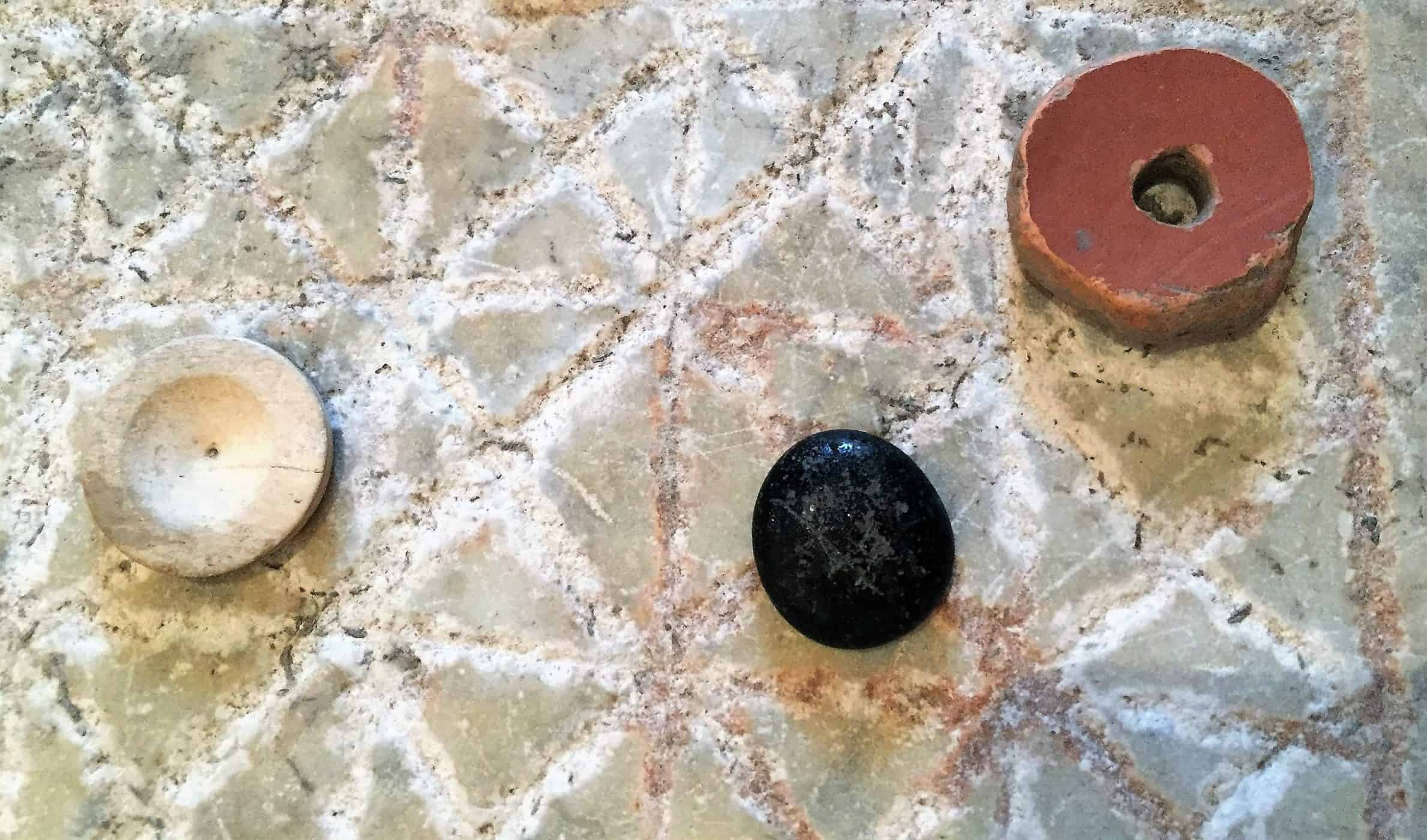Romans activity 12: last throw of the dice

Use Learn with Objects Romans 11: counters and knucklebones as your starting point to explore the fascinating subject of Roman toys and games.
- What were the objects in the bowl used for?
- What about the pile of small bones?
The children then carry out further research to find out about different Roman toys and games, before creating their own Roman game to play with friends.
Learning objectives
Increased knowledge and understanding of archaeology, Folkestone Roman Villa and a detailed aspect of Roman life.
Research skills.
Design technology skills – make a Roman board game
Curriculum links
KS1-2 History (Romans, Local History Study).
KS1-2 Design technology (make a Roman board game)
KS1-2 English (speaking and listening, script writing, role play, drama)
Explore this link on the British Museum website to discover a wide range of Roman games, including how to make and play them.
http://www.teachinghistory100.org/objects/about_the_object/roman_game_board
This is a great site too, with detailed information, and some incredible archaeological evidence for 5 popular Roman board games.
https://www.ancientgames.org/category/all-games/roman-games/
Find out about knucklebones and the different ways of scoring.
Make and play Roman games
Use the information on to make and play knucklebones or a choice of Roman board games.
For knucklebones you could used real ones from the butchers (and then boiled at home under adult supervision) or make your own at school using cream-coloured self-hardening clay. Boards can be made out of cardboard and paint.
Here’s some good videos showing how to play three popular Roman games:
Learn how to play Latrunculi.
https://www.youtube.com/watch?v=zQwX4BYoBc4
Learn how to play Nine Men’s Morris
https://www.youtube.com/watch?v=-j4r8cbbYuU
Learn how to play Duodecim Scripta - the Game of 12 Lives.
https://www.youtube.com/watch?v=OeG-oL_CL5M
